FeaturePerfectly Complicated: Louis Moinet’s Memoris Pays Homage To The Chronograph’s Legacy
As a young brand established in 2004, Louis Moinet celebrates the legacy of the eponymous French watchmaker, credited with inventing the chronograph. Specialising in state-of-the-art timepieces with a retro flavour, the brand have created a special place for themselves in collectors’ circles with their über-luxe watches—Memoris being one of them
May We Recommend
Whenever there’s a mention of the word ‘complication’ with respect to watchmaking, perhaps, a ‘chronograph’ is the first thing that comes to mind. Replete with start, stop and reset functions—this complication, over the years, has garnered enough popularity and even mass appeal, that it now embraces a sizeable percentage of the total Swiss watch production. However, this is not to say that it has lost status in terms of technical prowess or the know-how that goes into putting such a watch together, but is certainly more widely found when compared with gravity-defying tourbillons or cutting-edge perpetual calendars. So in 2013, when it was revealed that Louis Moinet, the famous 19th century watchmaker had actually created the first pocket chronograph in 1816; it started a fresh conversation around its origins, while catapulting a young brand with the eponymous name to instant fame in the haute horlogerie universe. And the rest, as they say… is history.

Until 2013 noted French watchmaker, Nicolas Mathieu Rieussec was credited with producing the first chronograph in 1821, when he was summoned by King Louis XVIII to design a mechanism that would time equestrian sports. Thus Rieussec’s machine was actually the world’s first commercially-viable chronograph used to time races. A contemporary of Abraham-Louis Breguet (who famously invented the tourbillon), Moinet created the high-frequency ‘Compteur de Tierces’ timepiece in 1816, primarily for working with astronomical equipment. It beat at a frequency of 2,16,000vph or 30Hz, and held the record for at least a century until in 1916, the standard chronometer speed was revised to present-day levels of 5Hz.

This fact changed the fate of Louis Moinet—a contemporary watch brand set up by Jean-Marie Schaller in Saint-Blaise, Neuchâtel, in 2004. The fully independent firm was established to pay homage to the illustrious watchmaker of a bygone era, whose inventions have had a deep impact on Schaller, and the mechanically-superior timepieces crafted at the Louis Moinet atelier. The watches are ultra-luxe and have an extremely retro aesthetic, often bordering on steampunk design—as in the case of their Jules Verne collection, which pays tribute to the celebrated French author. But their old-European vintage luxury vibe is truly unmissable. Produced as one-of-a-kind models or limited editions only, they comprise two categories—Cosmic Art and Mechanical Wonders. These watches are an ode to astronomy, and unlike most such timepieces that depict moon phases or the solar system with the planetary positions; these avant-garde pieces literally offer a slice of the universe on the wearers’ wrists since they use space material such as moon rock, Mars rocks, and even meteorite shards.
Memoris: A Magnificent Tribute To Mechanical Watchmaking
To celebrate the 200th anniversary of the chronograph, Louis Moinet launched the Memoris collection in 2016. This unique creation positioned the chronograph as not just merely a complication but the primary focus of the timekeeper. “It’s probably the most important launch we’ve ever done,” Jean-Marie Schaller, CEO of Louis Moinet, stated during the launch. While the Memoris is noticeably different from the original, it makes the chronograph the central function, while time is the complication here. Schaller was extremely clear about doing something different for their chronographs. While most contemporary chronographs feature a chapter ring on the dial with a tachymeter scale on the bezel, and more often than not—are designed to suit a sporty aesthetic—considering they are highly purpose-driven timekeepers; the Louis Moinet Memoris takes a different road. “We couldn’t draw inspiration from what had gone before; everyone else worked on the premise that the chronograph was an additional complication on top of the time function. Our starting point was the opposite: sweeping away the past and making the chronograph the heart of our design—the central component to which we then added a time function, rather than the other way round,” explains Schaller.
This meant that the watchmakers at the Louis Moinet maison did exactly what the eponymous inventor of the chronograph did back in the day; taking a completely different approach to watchmaking rather than attempting to merely improve an existing model. Indeed, that’s how Moinet invented the chronograph and was the first to achieve high frequencies—among his other remarkable achievements in fine watchmaking. The original piece is proudly displayed at the brand’s ateliers. It was purchased by Schaller at a Christie’s auction in Geneva on May 14, 2012, and was estimated at a worth of around CHF 5,000 back then.
Modern Mechanics On Your Wrist
A big idea is often easier said than done, so execution was the real challenge. When Schaller decided on this project, he promptly shared his vision with Concepto—the movement manufacturer that has worked alongside the brand since its outset. After all, a huge responsibility rested with the kind of movement that would be designed for a watch of such great magnitude. There were concerns such as: what should be highlighted, what techniques should be used, and what should be shown off. These needed to be addressed before one could proceed, since the company couldn’t dilute its philosophy of producing only the highest forms of mechanical art. While a traditional clutch column wheel and a classic mono-pusher are staples of any classic chronograph, the brand wanted the dial display to be such that it would do all the talking.
And, the timepiece lives up to every possible expectation. Each aspect of the chronograph can be admired in its entirety as soon as the pusher is pressed. This activates the column wheel, which controls and coordinates the functions with the minutes hammer, blocking lever and clutch. The chronograph stands out as the main entity on the dial, and merges seamlessly with the movement and its workings that are on full display. It’s worth noting that despite their extreme complexity, all these operations are managed by this mono-pusher. Louis Moinet have specially designed this new movement in a manner where the chronograph takes centre stage. They have opted to place the traditional workings of the automatic mechanism on the back of the movement and beneath the plate. The hours and minutes are displayed on a sub-dial at six o’clock, and the prime real estate is occupied by the 30-minute and small seconds sub-dials at three o’clock and nine o’clock respectively. One finds luminous hands sweeping over them while carrying out the functions. The column wheel also looks stately, situated at the 12 o’clock position.
The Case
Since this watch has been designed for such a special purpose, Louis Moinet have left no stone unturned in giving it the style it truly deserves. The curved 46mm case of the Memoris features a unique waterproofing system. The case band is inscribed with the Louis Moinet signature, and its lugs boast four black zircons in a screwed setting—a novel way for case decoration. With this, the brand have totally revamped the use of synthetic gemstones, which usually serve as pivots and provide proper lubrication for the movement components. The monopusher, with a hobnail pattern, is placed at two o’clock and operates a lateral clutch. The lugs are also designed in a manner that allows full movement to the straps unlike many pieces, where they remain stiff due to lack of space. There are versions available in 18-karat rose gold and 18-karat white gold, in nine limited editions of 12 or 60 pieces each. There’s also the Memoris Superlight edition in titanium, and as the name suggests, is extremely light despite housing such a heavy-duty mechanism. Weighing less than 31g, the case has a polished, satin finish, is non-corrosive and is extremely comfortable on the wrist.
The Chronograph Powerhouse: Calibre LM54
The Louis Moinet Memoris is powered by a swanky new movement—Calibre LM54. It beats at a frequency of 28,800vph, has 302 components and provides a 48-hour power reserve. The ingenuity lies in separation of the chronograph (147 components) from the automatic mechanism (155 components). For the first time ever, the entire chronograph has been positioned at the top of the watch, while the automatic part is located beneath the plate. It features an automatic pawl winding system with an elegant spring in a ‘crab claw’ design, or a bidirectional winding system with a miniature ceramic ball bearing mounted on the dual-material rotor. The brand calls it ‘Energie Plus’ since it allows the watch to be wound up in both directions, with minimum dissipation of energy, hence being more effective. Despite being a chronograph, it doesn’t give the impression that one has strapped on a bulky time-telling device on to their wrist. The watch is presented on a rich, glossy leather strap with a butterfly clasp and a fleur-de-lis or a lily-shaped buckle that adds an old-world-charm to the watch.
Of all horological complications, the chronograph still remains the most useful, arguably, and finds practical applications in day-to-day living. Louis Moinet captures this essence perfectly with the Memoris timepiece that romanticises this stopwatch feature, and almost compels one to think of what timekeeping would be without it.



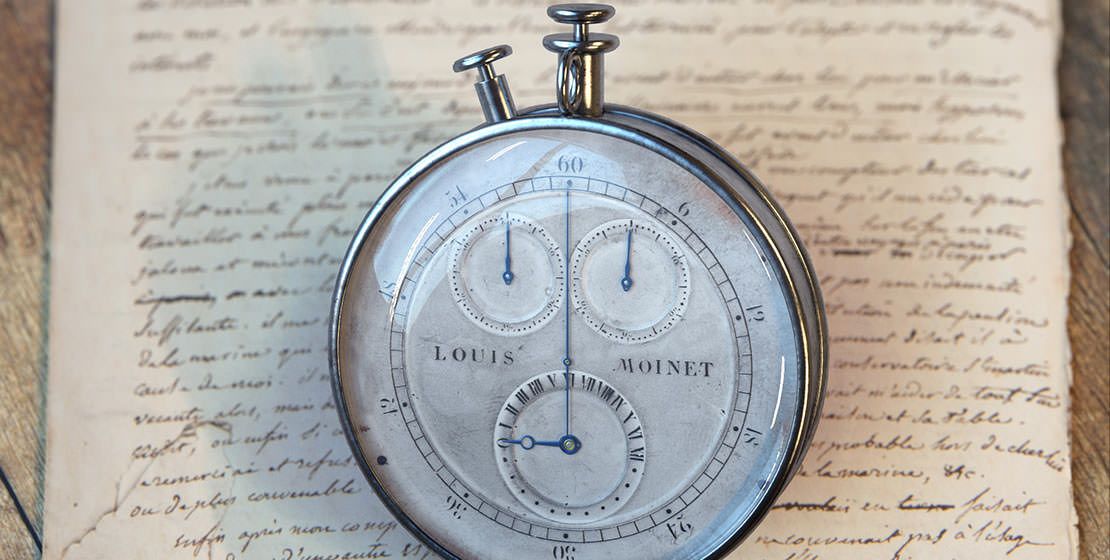


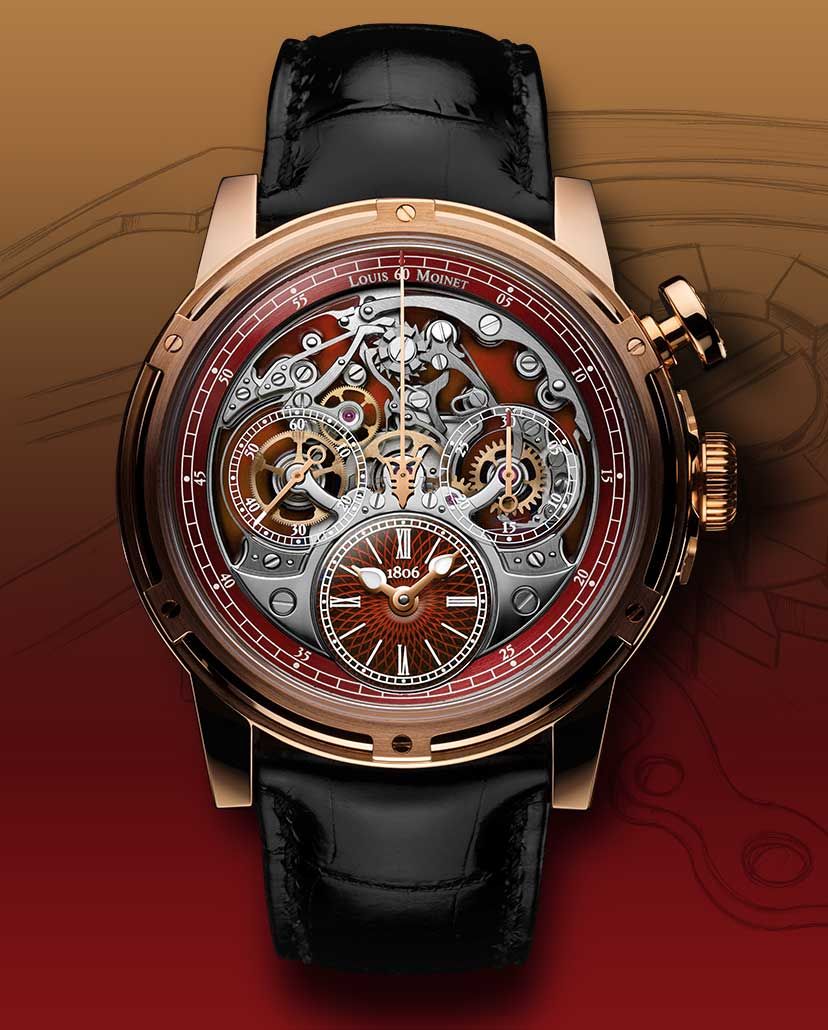
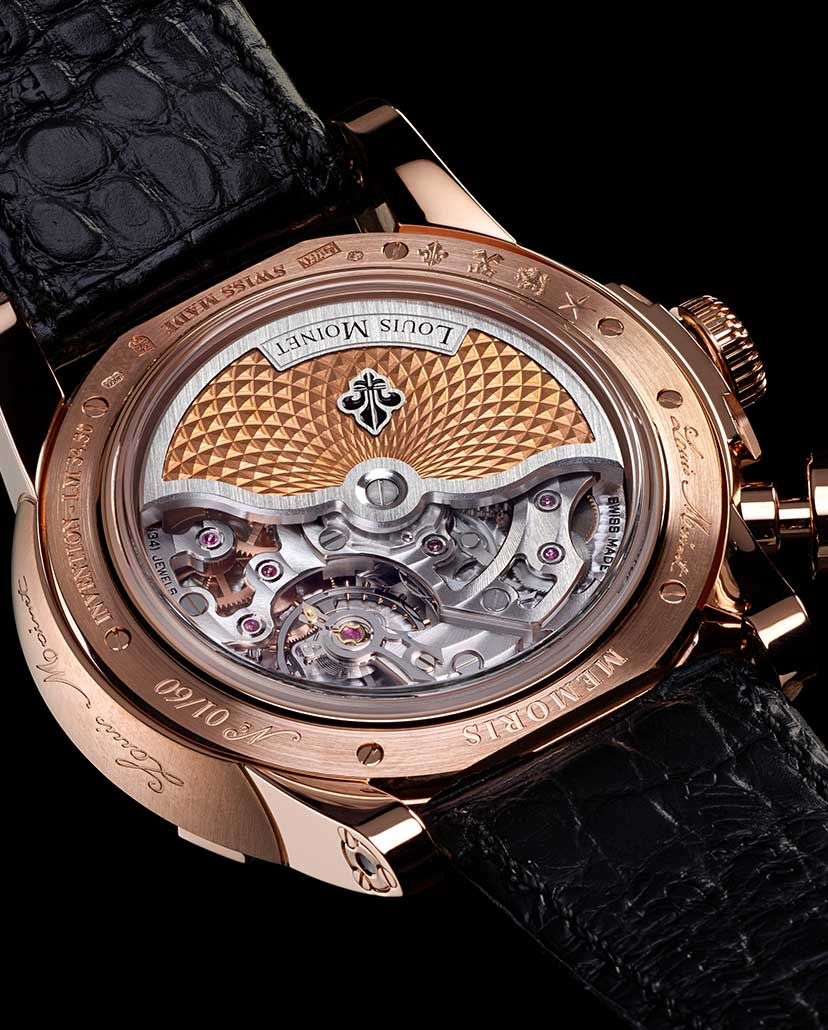
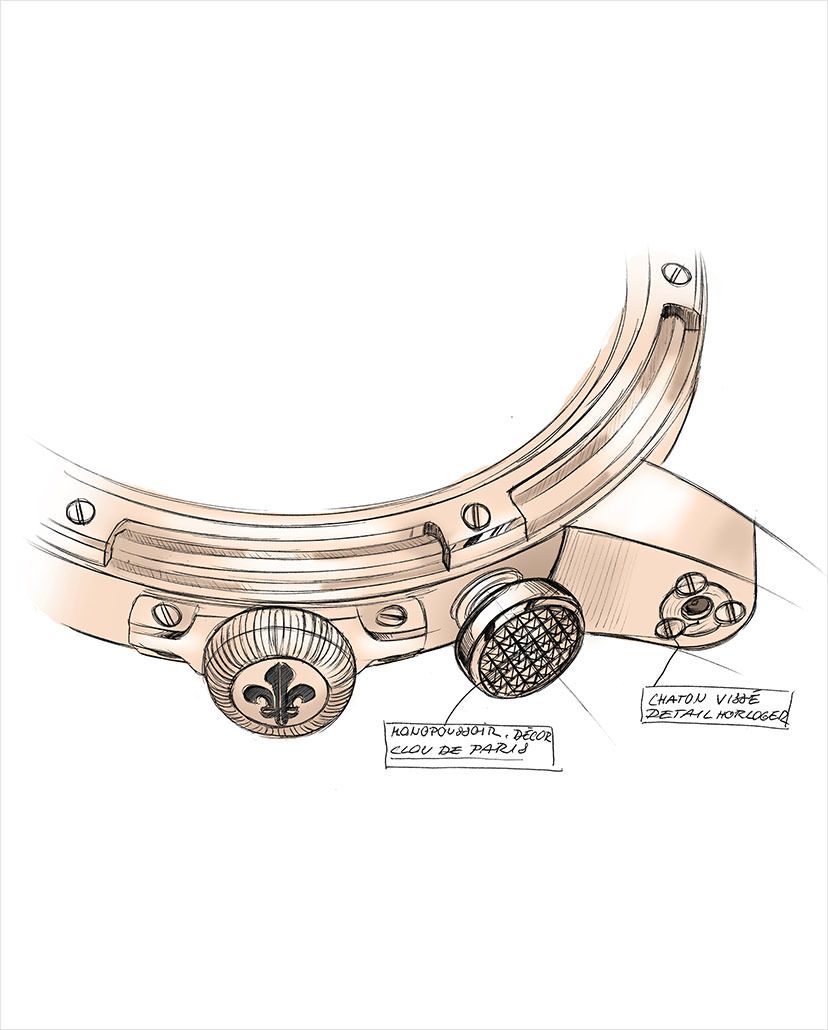

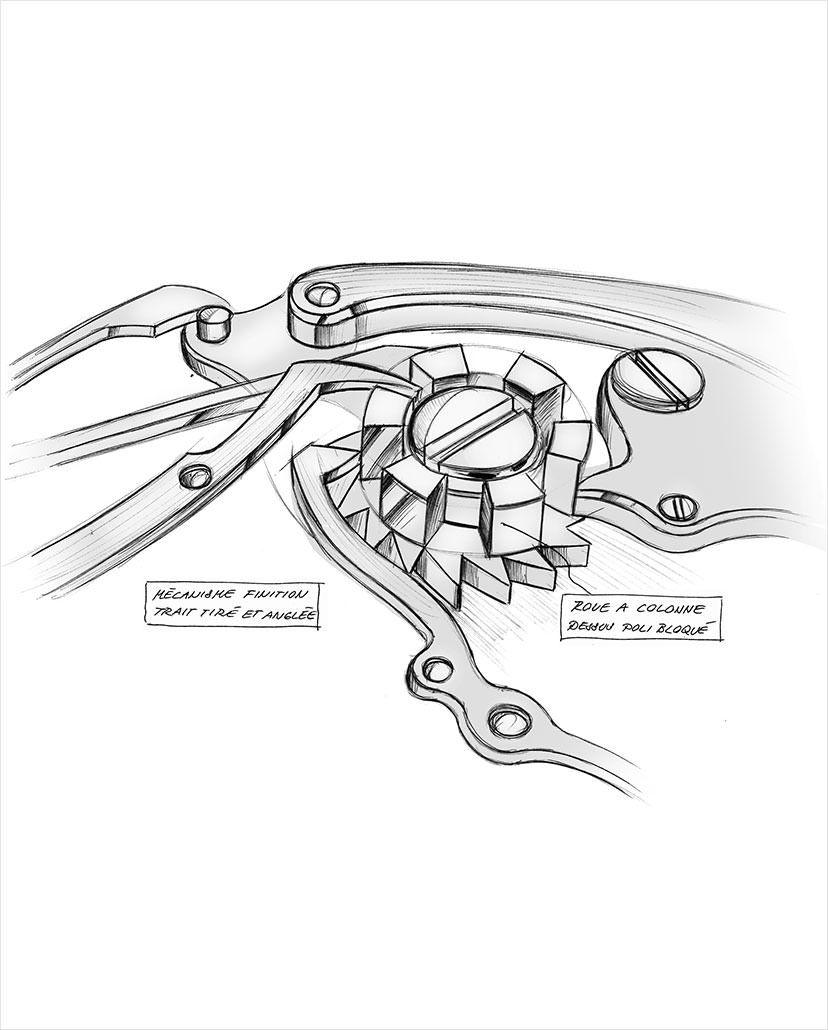

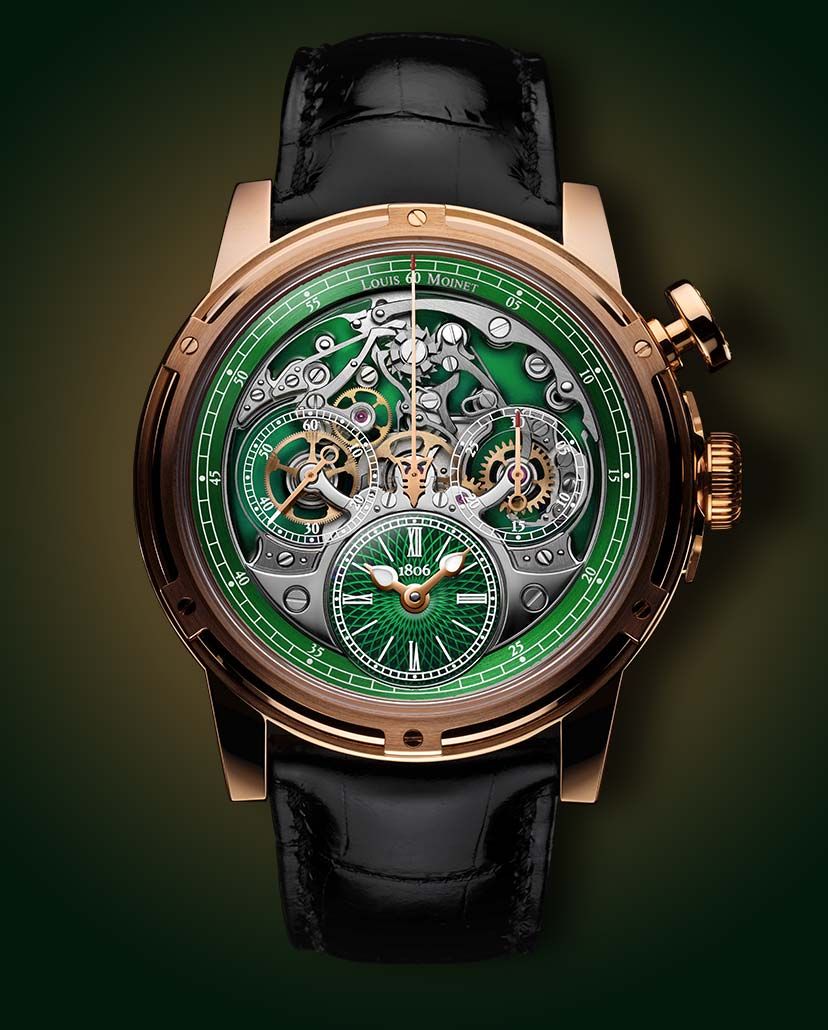
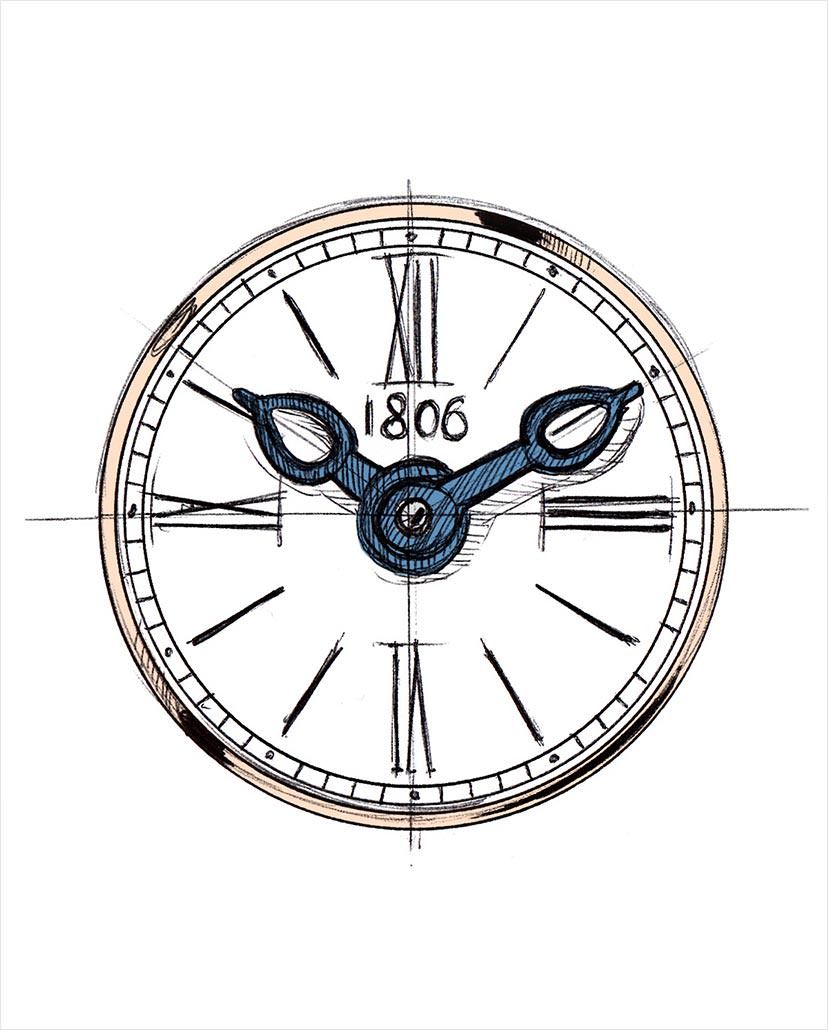


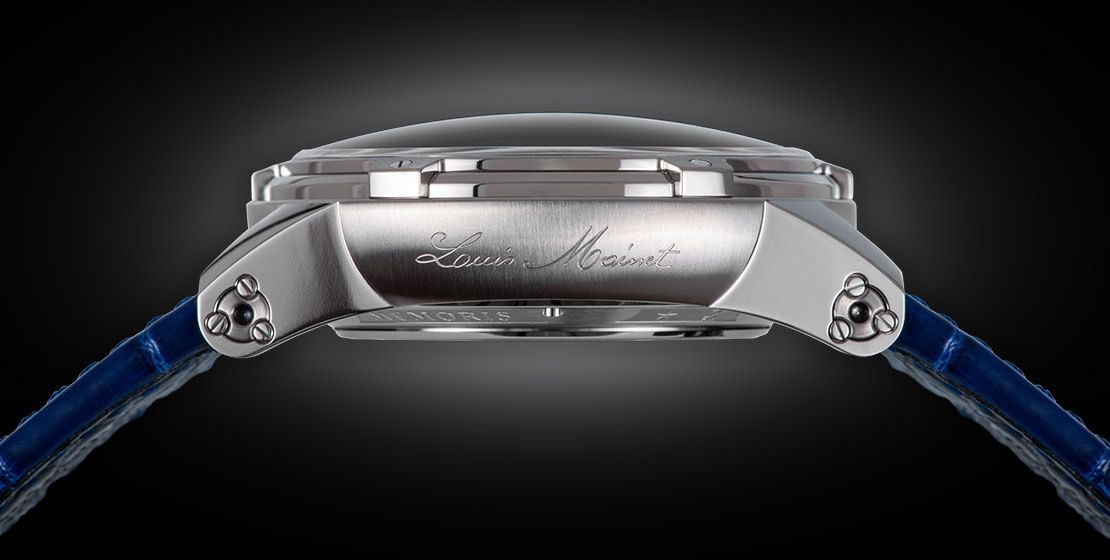
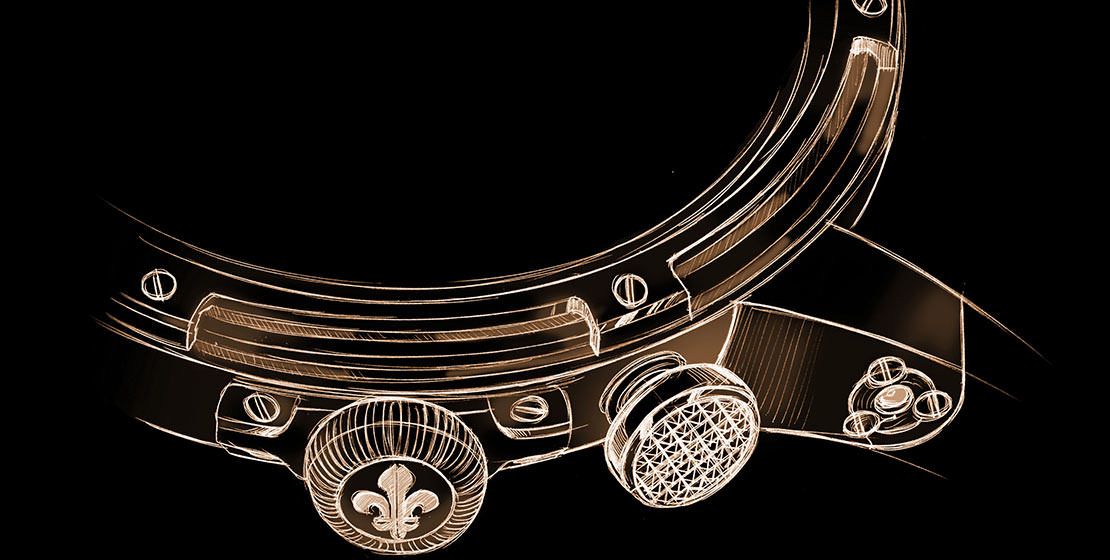
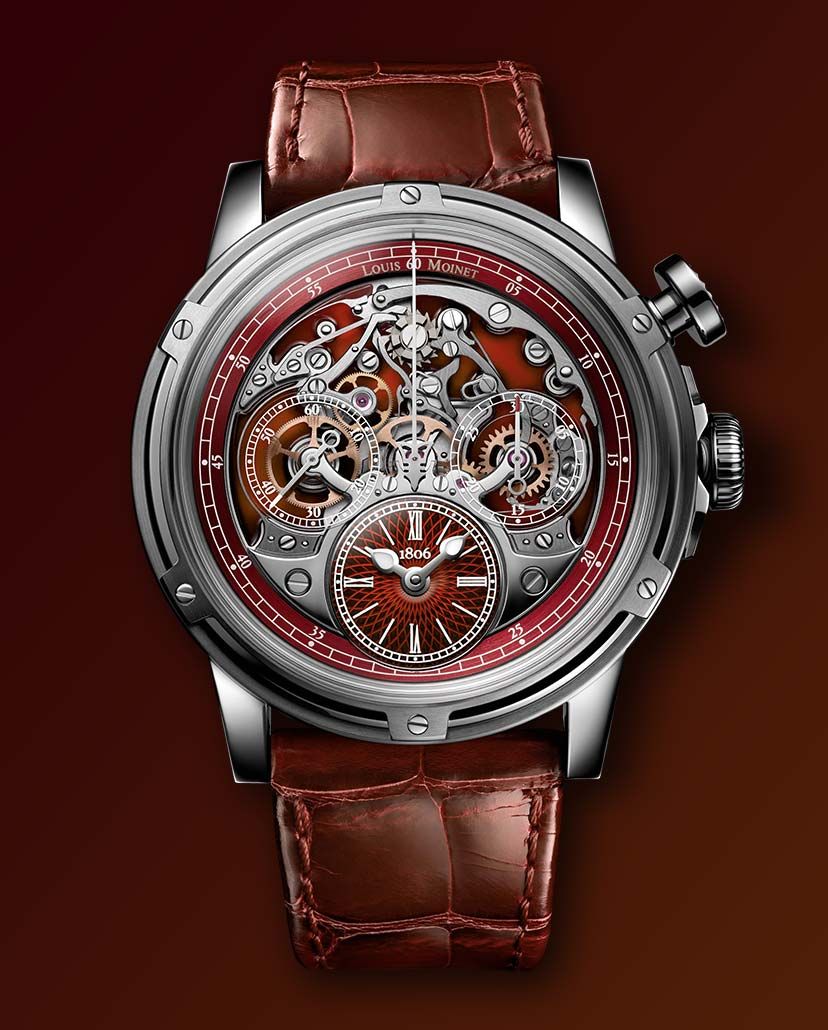
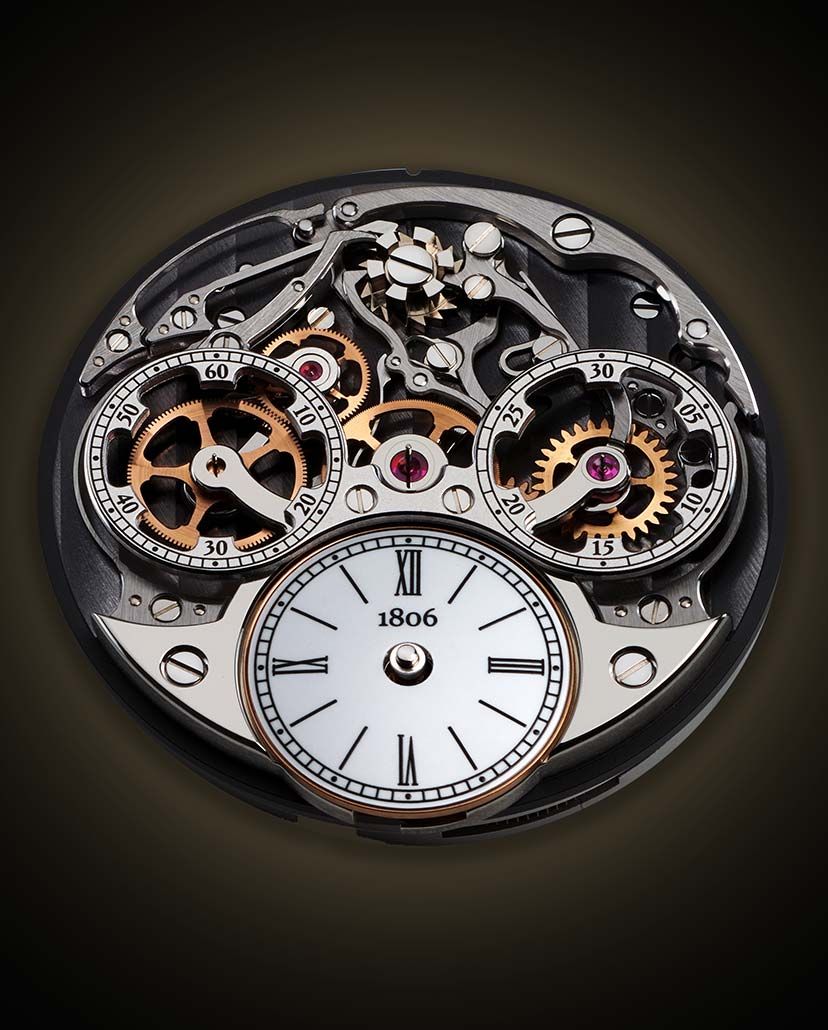

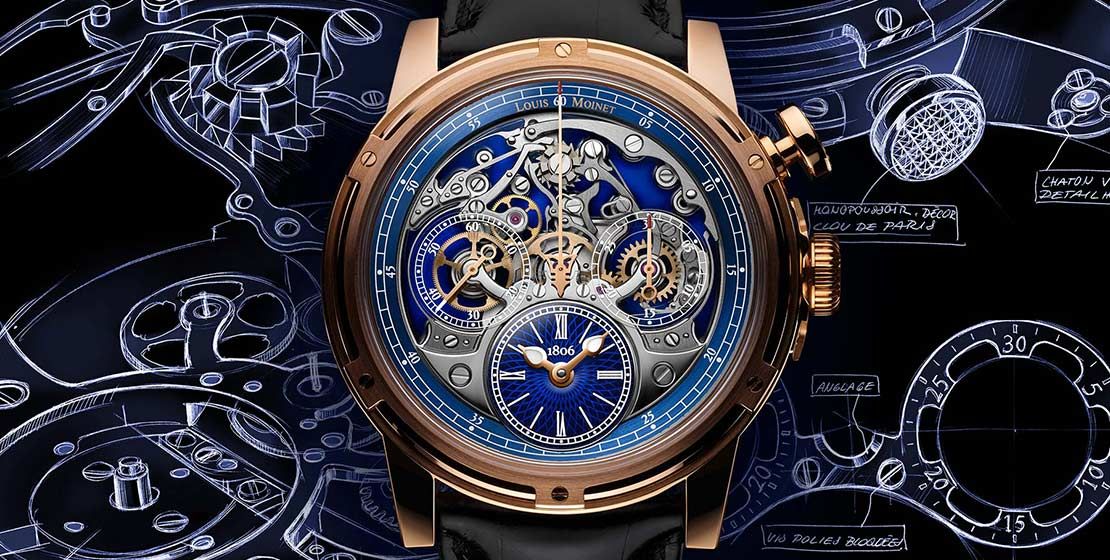
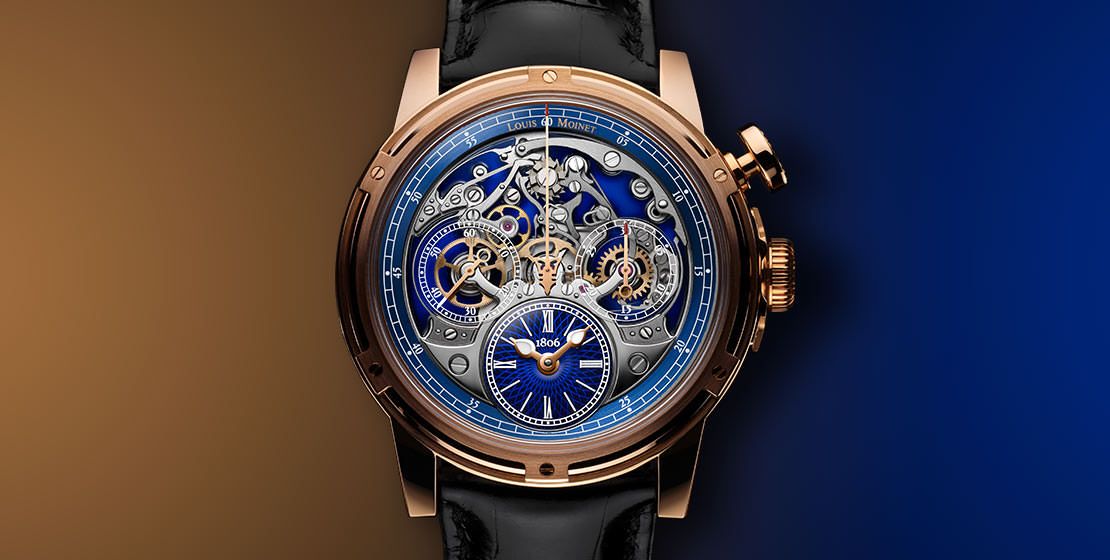













Extra ordinarily Designed, True Craftmenship Defined, Within and beyond imagination at the same Time…